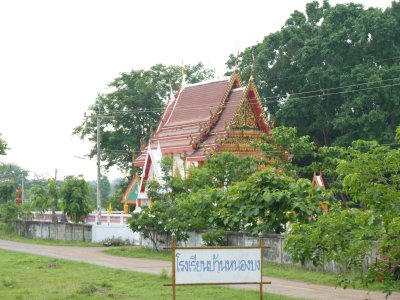
The Wats really are elegant and distinctive.
The overhead wires (carrying watts!) not quite so.
We haven't ventured into any Wats. Usual story of too little time and too many things to do. Must be an age thing, we become easily mentally overloaded.
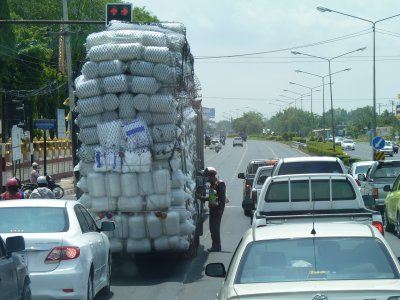
The police had also noticed and at least had a chat to the driver.
The rear suspension was on the stops. The front was up in the air. Educated guess is he had very little steering. His acceleration was a little wanting so we decided he was better far behind us than in front.
The majority of drivers are well behaved and predictable. Like anywhere there are some who are impatient.
On a two lane road (one in each direction) there are really four flows. Two lots of motorbikes and two lots of cars.
There are also motor bikes with sidecars, tractors and trucks powered by tractor engines which take up more room than motor bikes but move slower.
The open road speed limit for large trucks seems to be 80km/h, cars faster. Buses seem to be unlimited and in a hurry..
Cars can overtake other cars without looking at what is behind or what is coming towards them. Occasionally cars coming the other way will flash their lights, usually to indicate an impending near miss. They may also move over a bit.
Vehicles of any type can enter from a side road without looking. They will keep as close to the kerb as they can and accelerate slowly giving the faster moving traffic already on the road a chance to overtake.
Generally it all moves somewhat more slowly but we get there quicker than in Aus. It all seems to flow.
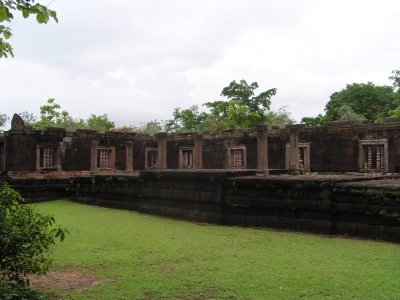
Apparently translates as Big Hill, once in Khmer and once in Thai. Its on an old volcano in an otherwise flat plain.
This building is assumed to be a changing room for people (royalty?) to prepare themselves for the shrine.
The shrine is believed to have been built some time between 1113 and 1150 AD during the rule of King Suriyavarman.
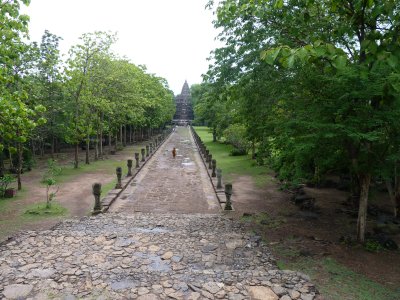
The little poles are sandstone lotus buds.
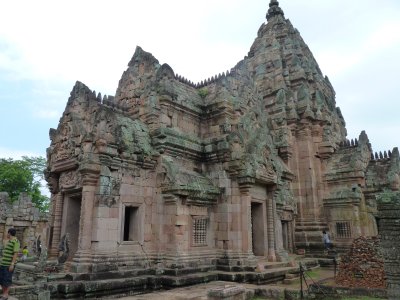
It took me a little while to realise that although it was a similar shape to the shrine at Si Phet it was also very different. Not just because it was more complete.
Si Phet was representative of the walled towns that were part of the earliest Buddhism. Phanom Rung was predominantly Hindu under Khmer influence, similar to Angkor Wat.
Until I saw this I had been labouring under the simple, but erroneous, assumption that SE Asia was always Buddhist.
Putting my European hat on. The roof of the shrine and surrounding buildings is sandstone arches. I can only guess the width of the building is limited by the need to support the roof. The European cathedrals solved the problem with buttresses.
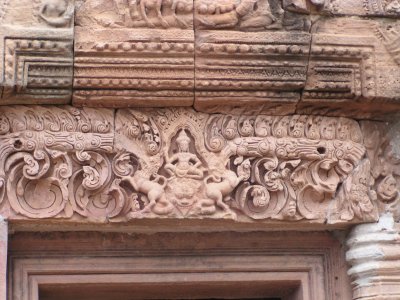
Hard to be sure (I don't know enough) but it could be an impression of Vishnu (there are also his incarnations of Rama and Krishna represented in some places).
I always found Hinduism rather complicated and a bit overwhelming. Something else to read up on.
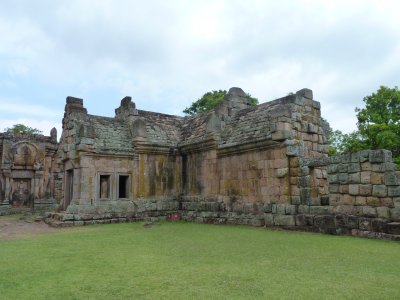
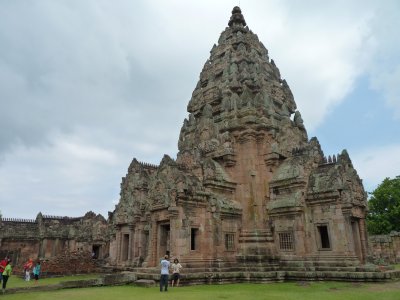

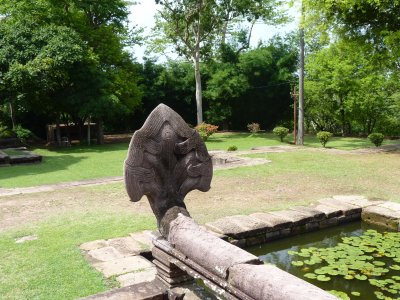
Or were they cobra's heads?
This could be an easy introduction to Angkor Wat which is of course much bigger. Phanom Rung is from the same Khmer background.
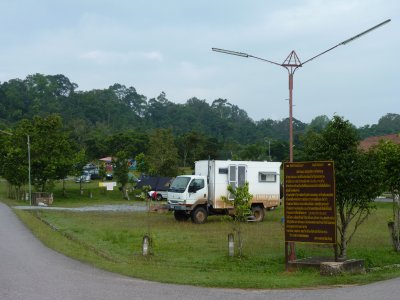
So we moved on a couple of hundred km to Khao Yai National Park.
This is the campsite. Admission to the park was 450 baht each plus 50 baht for the car, we think (hope?) for several days. About A$30. Our most expensive park, others have been 200 baht each for foreigners for 7 days, or free entry.
Camping was an additional 30 baht per person per night (about A$1). In total about A$11 per night as we rested a bit, ready for Cambodia.
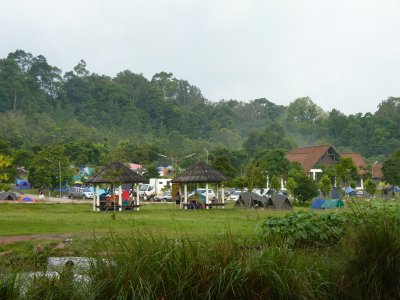
It was a weekend so we had quite a bit of company.
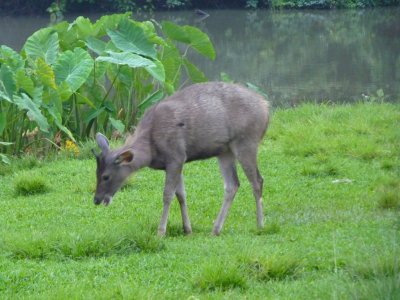
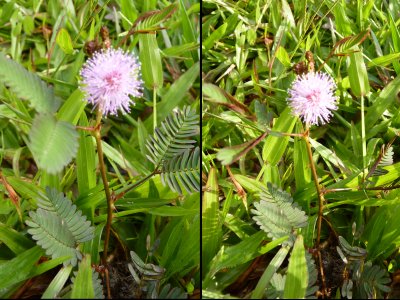
Not far from the campground we found lots more of those plants that close their leaves. This time with flowers. If you missed it the first time here is another before and after photo. If you were paying attention this has a flower. They really are intriguing to us, probably a weed in Thailand.
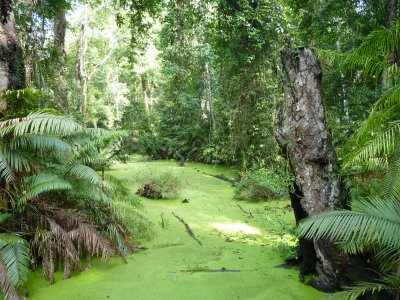
The flat green bit is weed covering water. Everything around us was soggy.
We hate leeches. We thought the path went in a circuit but weren't sure. Should we go back or carry on. We carried on and got it right. They really are horrible creatures.
We finally realised some of the Thais weren't wearing gaiters as defence against snakes. They were wearing soft plastic overboots as defence against "sucking worms".
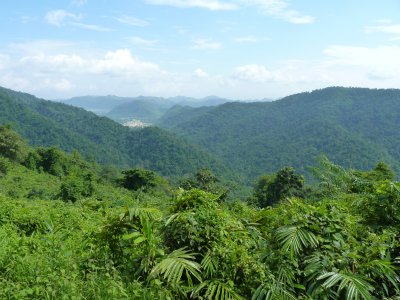
It was nice to get above the trees at a view point.
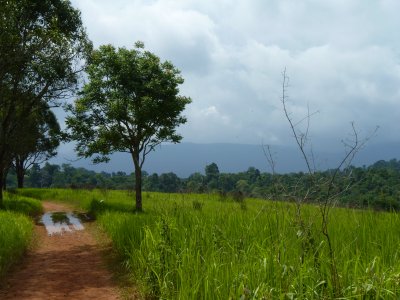
Salt licks are provided for the animals, like elephants, but we didn't see any.
There's a large observation tower near here. The park harbours about 350 species of birds but we only hear a few and see none.
Talked later to a Thai bird watcher. Very well equipped. She had only a little better success than us and had seen 3 species.
Its been said that seeing fauna in Thailand is difficult. Maybe they have all been scared off by boys with catapaults!
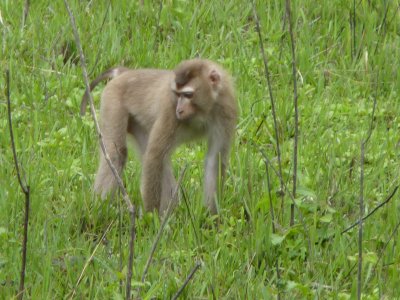
We also heard lots of whooping but were unable to figure out what it was. We've discovered previously that its much easier to see things when we know what we are looking for!
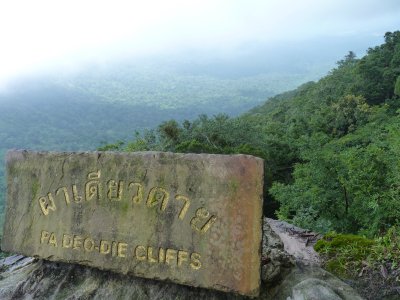
It was a bit rainy and cloudy. Sorry!
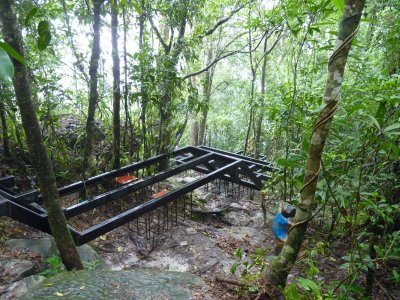
A new path from the road to the lookout was being constructed. The concrete has yet to be poured around the reinforcing.
The red bits are 6mm steel plate with four bolts through them. Drilled on site. Rather than the dull approach of casting the concrete then drilling holes for the masonry bolts the concrete will be cast with the plates and bolts in place. Maybe the bolts just need tightening a little bit afterwards but the walkway is heavy enough to not go anywhere anyway.
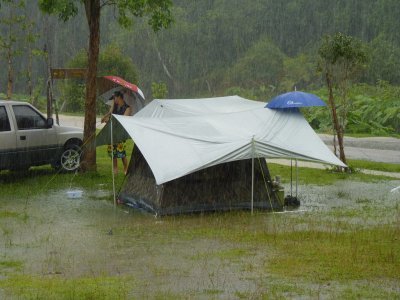
We harvested about 30 litres of water from our roof and filled our tanks in less than a half hour.
This couple weren't so fortunate. The tent was pitched at the low point.
They made a few adjustments during the rain. When it stopped they picked the tent up, emptied the water out, and moved it back about 5m to higher ground.
It was all dry half an hour later.
Ali is of the view that camping is really taking off in Thailand!
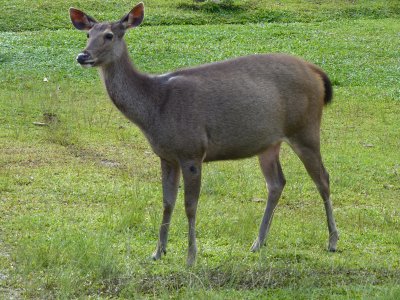
Apparently they have small antlers which allow them to move around in the forest.
There are other deer that weren't born so lucky and are now extinct due to hunting and land use change.
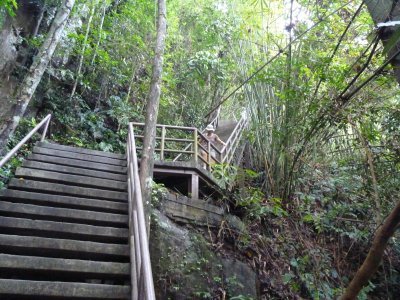
It also had 181 very steep steps.
Yes, we did manage to climb back up them.
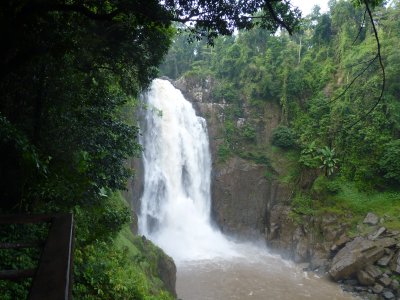
Haven't a clue what the rocks were. There's been a bit of volcanic activity around in the past and there are also sandstones.
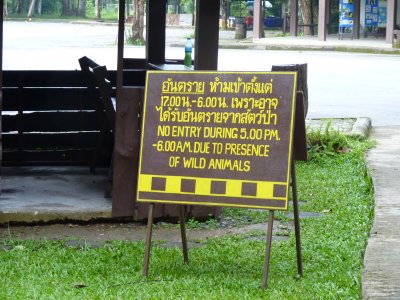
We weren't sure who had taught the animals how to tell the time and why humans were off limits after 6am.
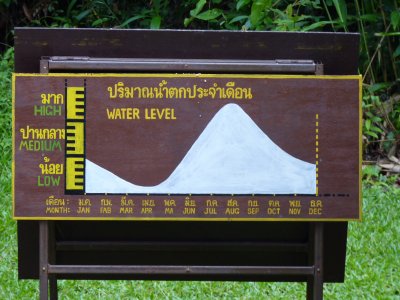

This pile of reasonably fresh elephant dung was as close as we got.
At least we know they were there somewhere.